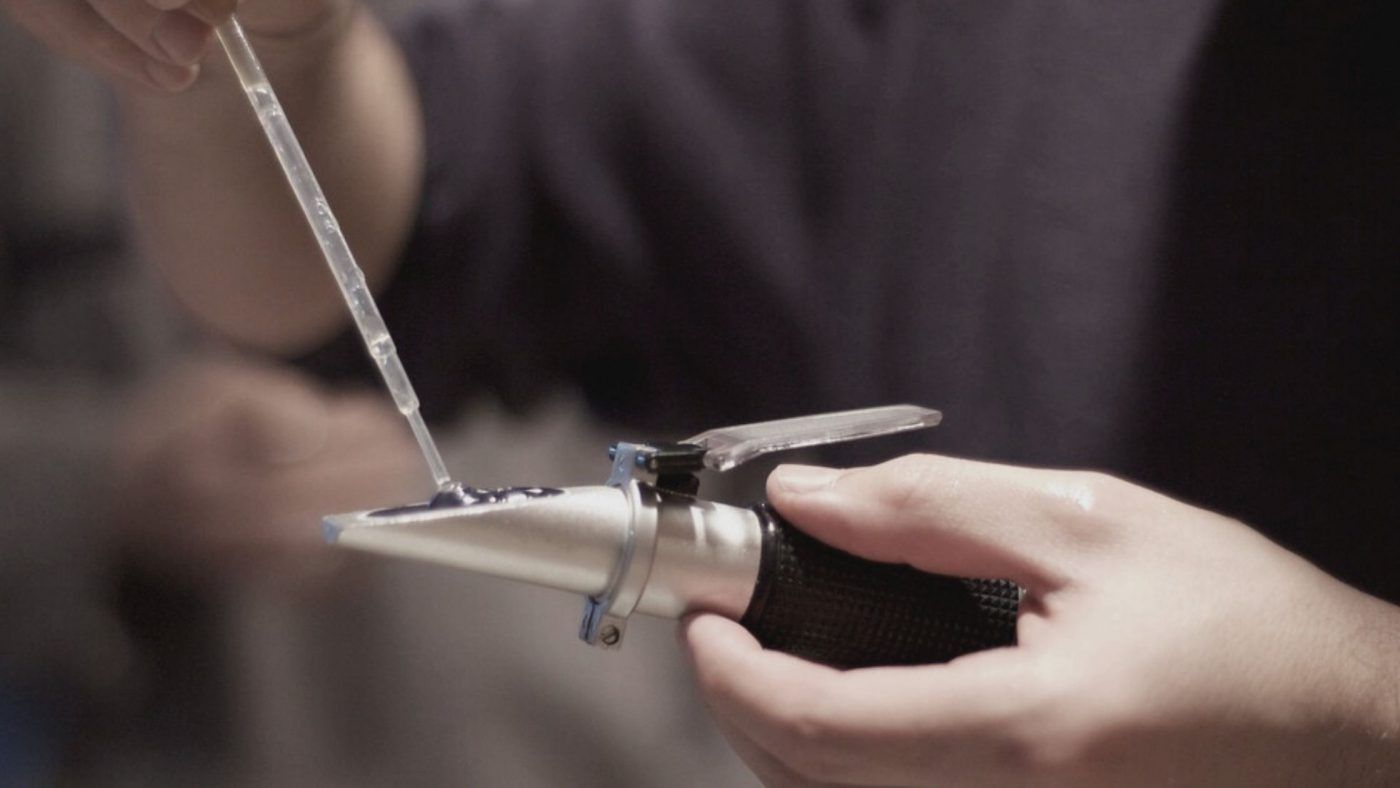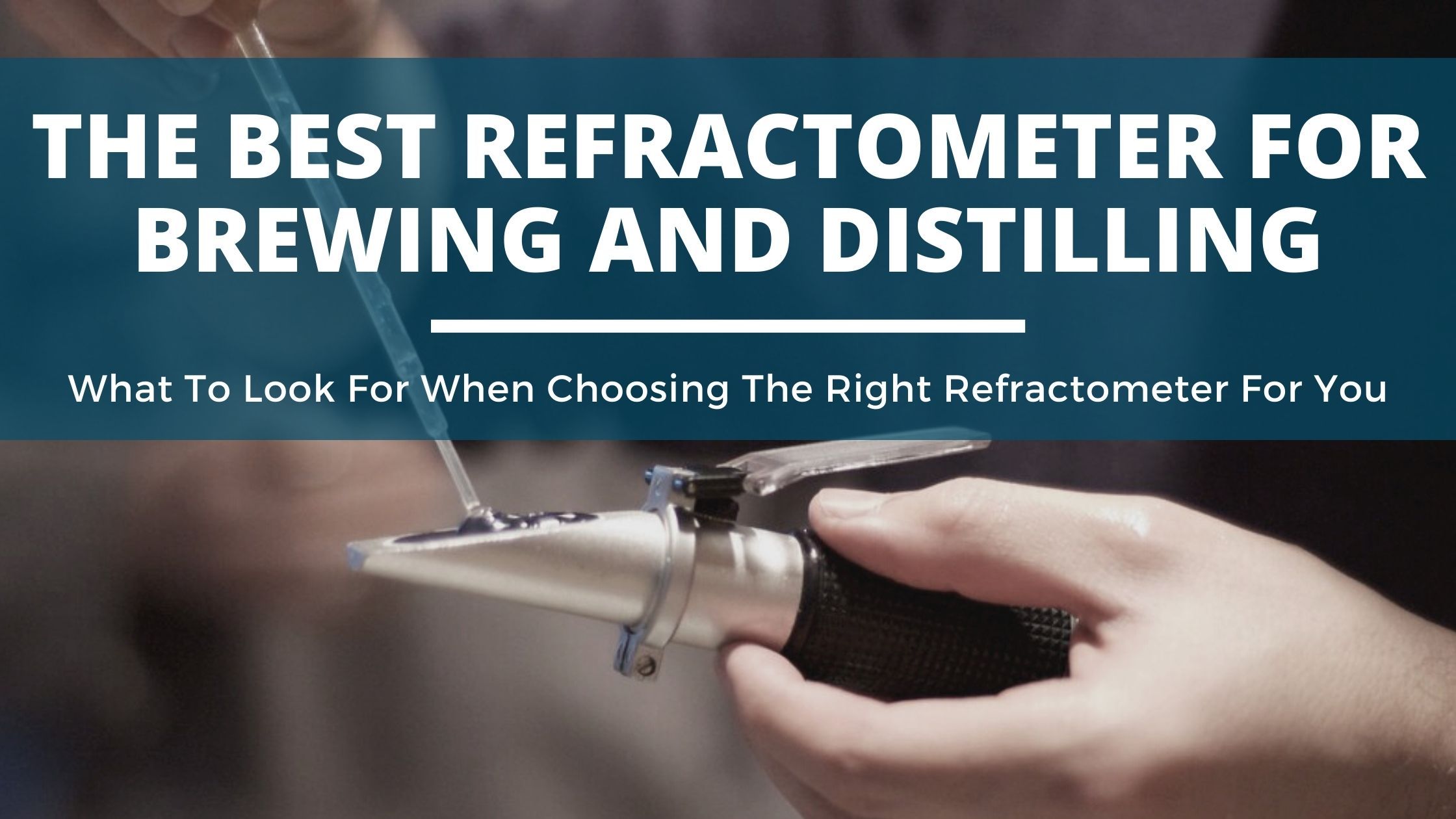Test Equipment, Tools and Equipment
The Best Refractometers For Brewing and Distilling In 2023 (Complete Guide)
When looking for the best refractometer, you’re going to run into a range of devices that vary in accuracy, precision, usability, and most of all price!
We’ve used everything from the simple handheld optical refractometer to the nifty digital versions that have hit the market. Based on your level of experience and the type of brewing or distilling you do, you may need both a refractometer and a hydrometer to obtain accurate readings.
In this article, we’re going to share our favorite four refractometers in 2023, but first, let’s first look at what a refractometer is and why you need one.
Table of Contents
What Is A Refractometer And Why Do I Need One?
A refractometer is used to keep track of how much sugar has been converted into alcohol during fermentation.
The way it does this is by using the refraction of light to measure the sugar content. Light entering the device bends as it passes through the water and sugar solution, projecting a line on the Brix scale which is converted into a specific gravity reading.
You’ll then have a measurement of the specific gravity, which is the quantity of sugar that is available for fermentation.
Specific gravity (SG) is also referred to as the potential alcohol in the wort, wash or wine.
Bear in mind that the refractometer is accurate for the initial specific gravity measurement but becomes less accurate as the fermentation proceeds. The reason for this is that the increasing quantity of alcohol changes the reading.
So, you need to adjust your measurements using a table or brewing software to get an accurate reading.
You can use an hydrometer to create a table of readings that will give you the percentage adjustments you need to make for your specific refractometer.

Calibrating Your Refractometer
Before you take your first reading, your refractometer must be calibrated.
This is accomplished using a sample of clear water (distilled) and sugar (sucrose). When brewing beer, you have a mix of maltose and not sucrose, so there needs to be an adjustment made to the scale.
Your refractometer has a Brix scale that you can convert to a specific gravity measurement or a Plato measurement. This calculation is further complicated by the fact that as the wort ferments, the added alcohol changes the equation.
In practice, this means that to calculate the true gravity of a fermenting or fully fermented beer, you need not only the current reading but the initial reading and an adjustment chart to ascertain the true readings.
Without a refractometer or hydrometer, you’ll struggle to get consistent brewing results.
As your yeast consumes the sugar, it turns it into a mixture of alcohol and carbon dioxide (CO2). A host of by-products are also produced by the yeast, which will affect your wine, beer, or spirit’s flavor.
This is why you need a refractometer to track the progress of your fermentation, especially if you add
So, tracking your fermentation process by taking regular readings will help you to get an accurate idea of how the process is proceeding. Your end-product will be improved when you closely manage the fermentation process.
Also, bear in mind that temperature changes both the refractometer and hydrometer readings. For this reason, a temperature chart is needed to adjust the readings based on the sample temperature.
The Difference Between a Brewing Hydrometer and a Refractometer
The main difference between a refractometer and a brewing hydrometer is that they use two totally different mechanisms to measure the sugar content of a solution.
The hydrometer measures the density of a liquid-based on how the device floats in the liquid.
The refractometer measures refracted light passing through a liquid to determine the amount of sugar that has dissolved in the liquid sample.
There is much debate regarding the accuracy of refractometers as they not only need to be adjusted for the initial measurement, but they require repeated daily adjustments to be truly accurate.
Hydrometers are also calibrated initially but are less prone to error due to calibration issues. As you become more experienced, you’ll find that hydrometers tend to roll off counters and shatter on the floor though. So they do come with their negatives.
How to Best Use a Refractometer
The refractometer measures the sugar content of your fermenting beer, wine, or cider. This measurement is then converted into an alcohol content, using some clever calculations.
To obtain accurate readings, follow the steps below:
Step-by-Step Instructions to Use a Refractometer:
Step 1: Calibrate your refractometer.
- Place 3 drops of distilled water on the prism.
- Aim the refractometer at a light source or switch on the internal light.
- Adjust the magnification so that the scale is in focus.
- Check to see that the line is exactly in the middle of the blue and white sectors. Use a screwdriver to adjust the zero mark so that it bisects the two colors (blue and white) at the center.
- After making your adjustments, ensure that the prism is completely dry. Any residual water will affect your subsequent readings, so this is a vital step that you must follow each time you use your refractometer.
Step 2: Place a few drops of wine or beer on the prism to take a reading.
- Use a clean pipette or spoon to add a few drops of liquid to the refractometer. Make sure that your implements are sanitized to avoid contaminating your brew.
Step 3: Aim the refractometer at a light source and take your measurement.
- After closing and locking the flap in place, hold the refractometer towards the light and adjust the focus.
- Then record the reading from the Brix scale.
Step 4: Calculate your sample’s alcohol content.
- Convert your reading to specific gravity by using the following calculation.
- 1+(0.004 x Brix reading) = Specific Gravity
Step 5: Clean and dry your refractometer.
- Using distilled water, clean all traces of the solution off the prism and flap.
- Dry the prism with a cloth or paper towel so that there is no trace of the previous sample or distilled water left.
Step 6: Correct the Brix reading.
- When brewing beer, the wort will contain a mixture of sugars, including glucose, fructose, sucrose, and maltose.
- Your refractometer may come with a Wort Correction Factor, but if not, you can divide the Brix reading by 1.004 to get a reading that is more in line with what you might expect from a hydrometer.
Step 7: Compensate for temperature.
- If your refractometer doesn’t have automatic temperature compensation, then allow your sample to cool to below 86°F (30°C) before taking a reading.
- Then use the temperature compensation chart to calculate the adjusted reading based on the ambient air temperature.
Step 8: Take more than one sample and reading.
- One of the benefits of using a refractometer is that the sample you use is very small. So, take a few samples to get an average of at least three measurements for greater accuracy.
What Different Types of Refractometers Are There?
There are four main types of refractometers:
- Traditional Handheld Analog Refractometers
- Digital Handheld Refractometers
- Laboratory or Abbe Refractometer
- Inline Process Refractometers
For home brewers, an analog or digital refractometer is sufficiently accurate to create a good product.
Commercial brewing necessitates more rigorous testing and recording of alcohol content, especially for customs and excise.
For this, the laboratory and inline process refractometers are better suited. However, professional winemakers and brewers do still make use of analog and digital refractometers.
The 4 Best Refractometers (In 2024)
Whether you are a beginner, an experienced hobbyist, or a budding professional, finding the best refractometer to accurately measure sugar and alcohol levels is vital.
Here are some of the best refractometers available in 2022.
1. Best For The Beginner: Aichose Analog Refractometer
This is a simple analog refractometer that is easy to calibrate and use.
You’ll be able to consistently pull accurate readings of 0-32% Brix and 1.000-1.120 Specific Gravity.
We particularly liked the fact that this refractometer comes with automatic temperature compensation. This makes it less complicated and quicker to get your results.
The device is made from lightweight chromium and comes in a sturdy case for protection.
Pros:
- Accurate readings of 0-32% Brix and 1.000-1.120 Specific Gravity (Used for science research and in clinical laboratories).
- Automatic Temperature Compensation.
- It comes with a cleaning cloth, screwdriver, and extra pipettes.
Cons:
- Uses external light source
- It's designed for testing the suger content and specific gravity of liquid.
2. Best For The Advanced Home Brewer MILWAUKEE MA871 Digital Refractometer
The MA871 is a well-priced digital refractometer aimed at the serious home-brewer.
It has a one-point calibration that uses either distilled or deionized water. The stainless steel sample well and IP65 rating render the unit dust and water-resistant as well, making it easy to keep clean.
The temperature compensation methodology is based on an internationally recognized standard. This device provides advanced home brewers and winemakers with a professional piece of equipment with which to perfect their craft.
Pros:
- One-point calibration is quick and easy.
- Extremely accurate.
- Stainless steel construction makes it easy to keep ultra-clean.
- Built to international standards.
Cons:
- Expensive.
- Fast, accurate results with digital dual level LCD readout. Easy measurement with just 2-3 drops of sample needed and results less than 2 seconds.
3. Best Professional Grade: Lnicez Instruments Digital Refractometer:
The Lnicez Instruments refractometer is perfect for the professional winemaker or brewer who wishes to have a state-of-the-art device on hand wherever they are.
The IP65-rated device can withstand serious use and is accurate to a Brix reading of ± 0.2% and is usable in temperatures of -12°F (10°C) – 104°F (40°C), with a range of 0.0-55.0%.
The units undergo stringent quality control to ensure each device performs accurately.
Pros:
- Excellent range of 0.0-55.0% with an accuracy of Brix ± 0.2%/± 0.1°C.
- Resolution of 0.1% Brix.
- Refractive Index accuracy of ± 0.001
- Automatic temperature compensation between 50°F to 104°F.
- A sample size of only 0.3ml (2 drops) means minimal wastage.
- A very quick measuring time of approximately 2 seconds.
Cons:
- Very expensive.
- Not aimed at the home brewer or winemaker.
- Color, rather choose the latest black version.
- Compact, lightweight design for easy portability. IP65 rating for protection against water and dust
4. Best Digital refractometer: Milwaukee MA887 Digital Refractometer
Deciding on the best digital refractometer was no easy task, but the MA887 is the ideal compromise between price and quality.
It comes with automatic temperature compensation and provides quick and accurate results with the minimum of fuss and bother.
This refractometer is highly regarded by demanding brewers and winemakers and includes a hard shell and padded case.
Pros:
- Extremely accurate with the refractive index and temperature measured and converted into Practical Salinity Units (PSU), Salinity in parts per thousand(ppt), or Specific Gravity (S.G. (20/20)
- Accurate to +/-2 PSU.
- Comes in a sturdy plastic case.
Cons:
- Expensive












